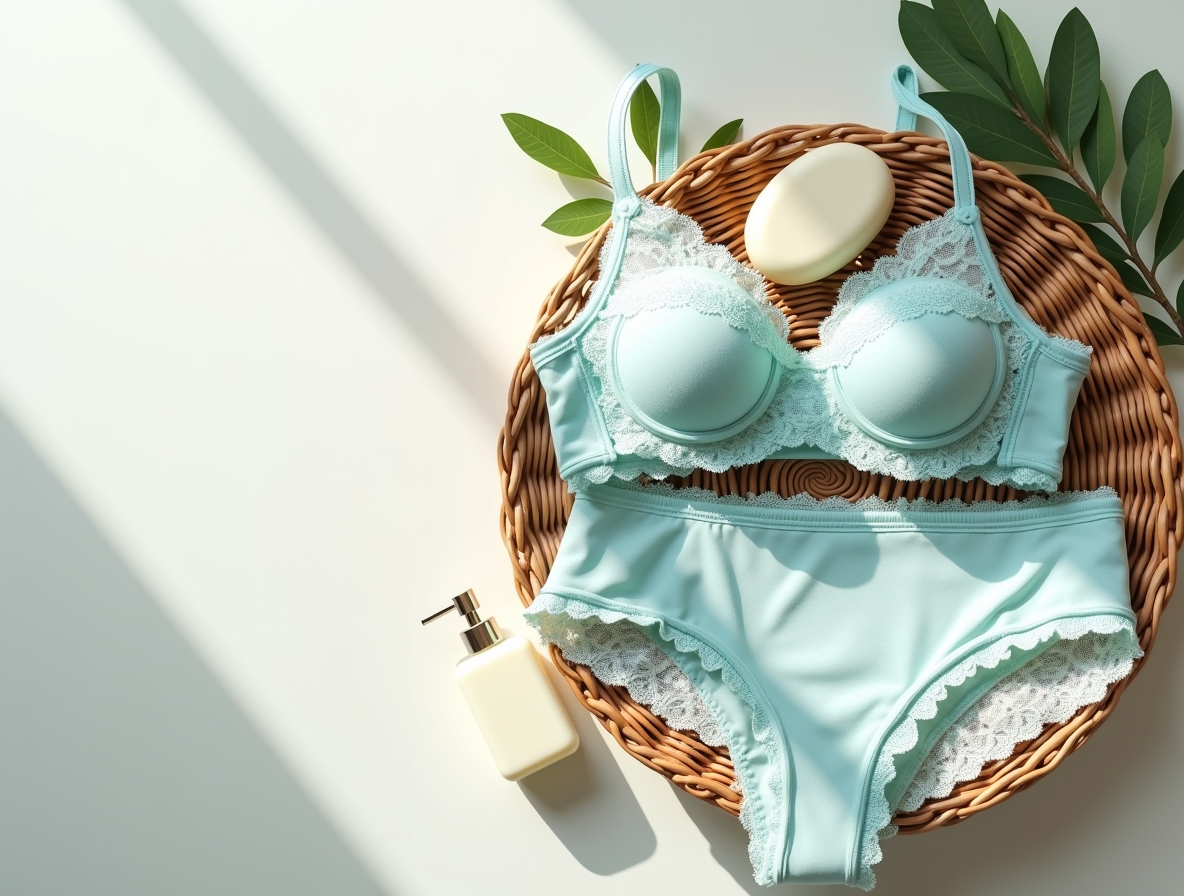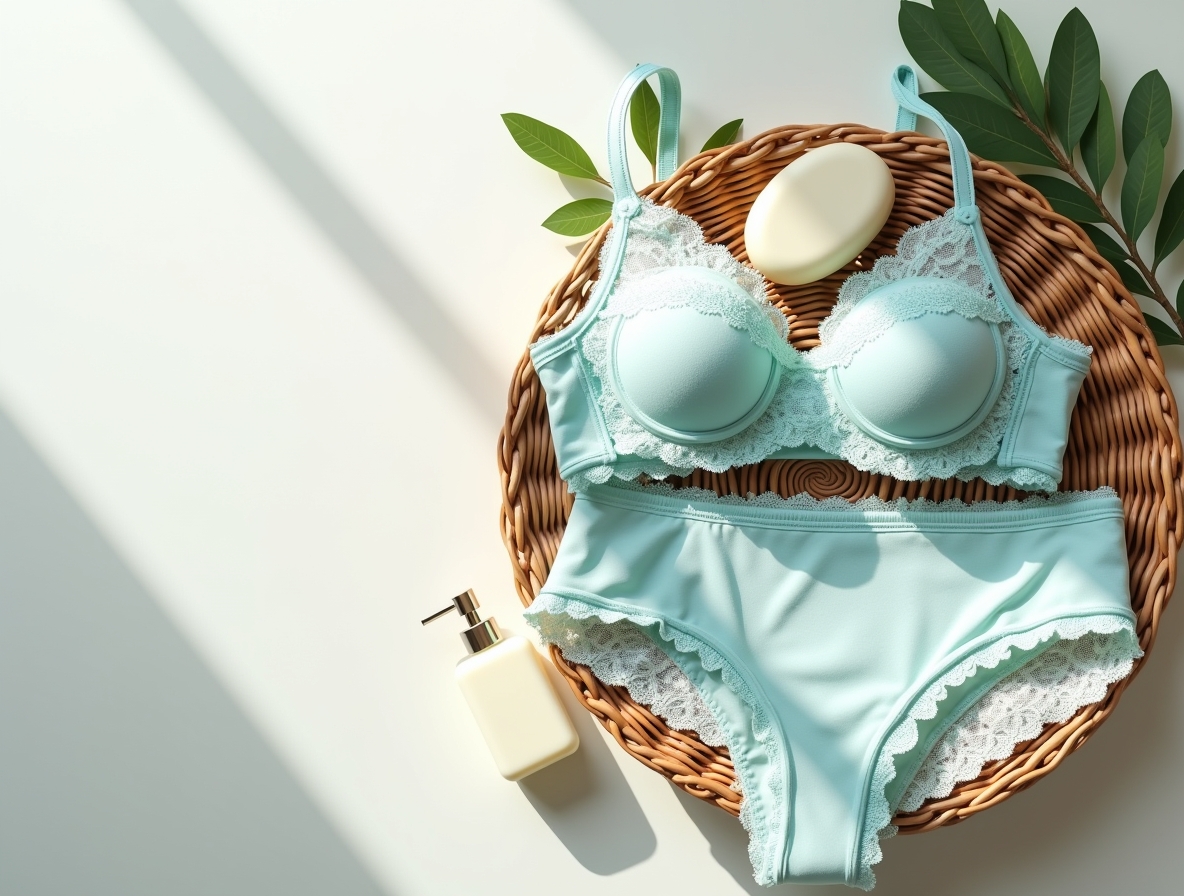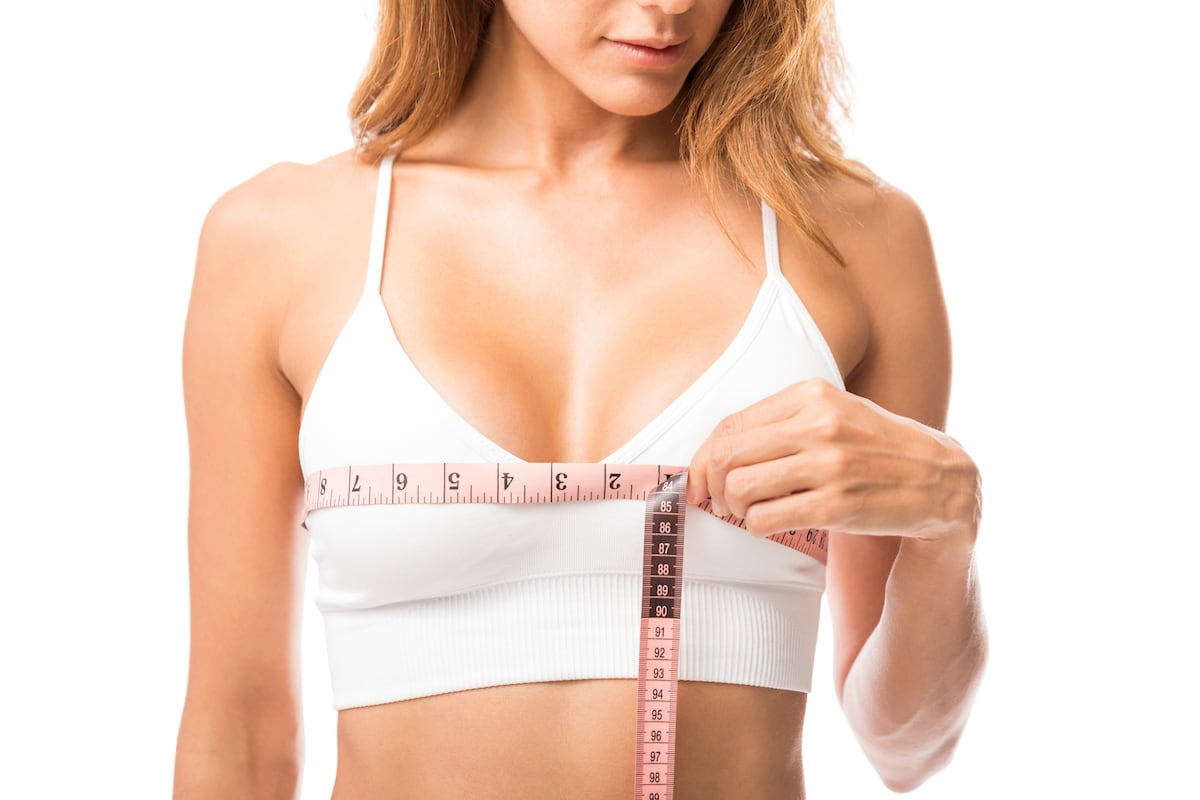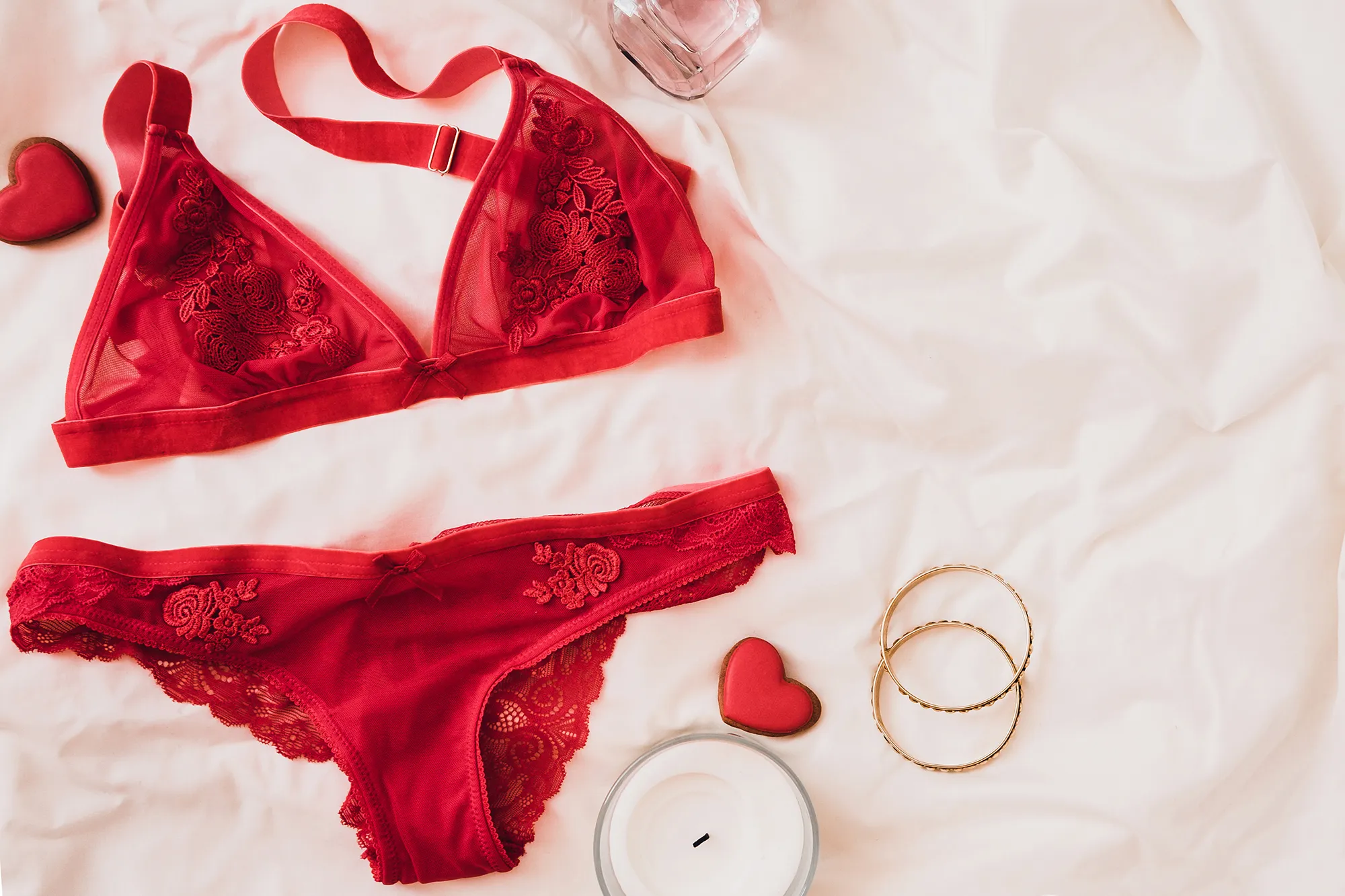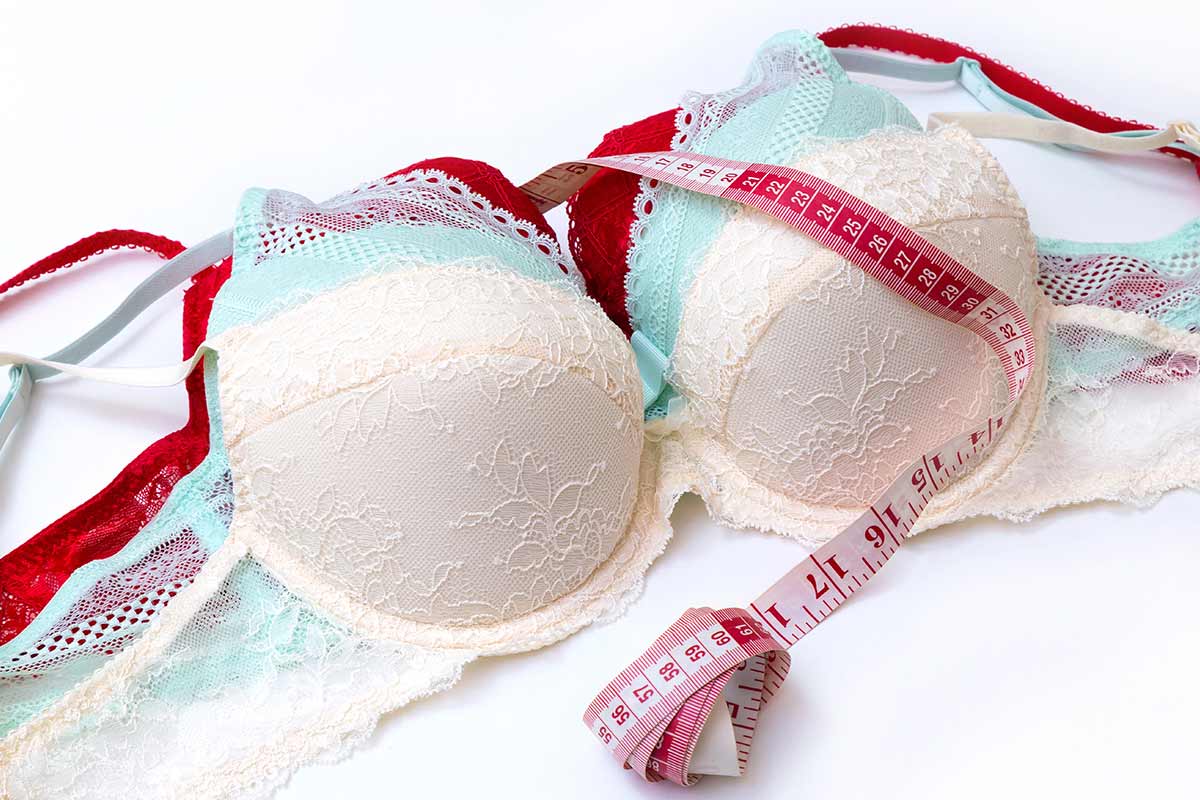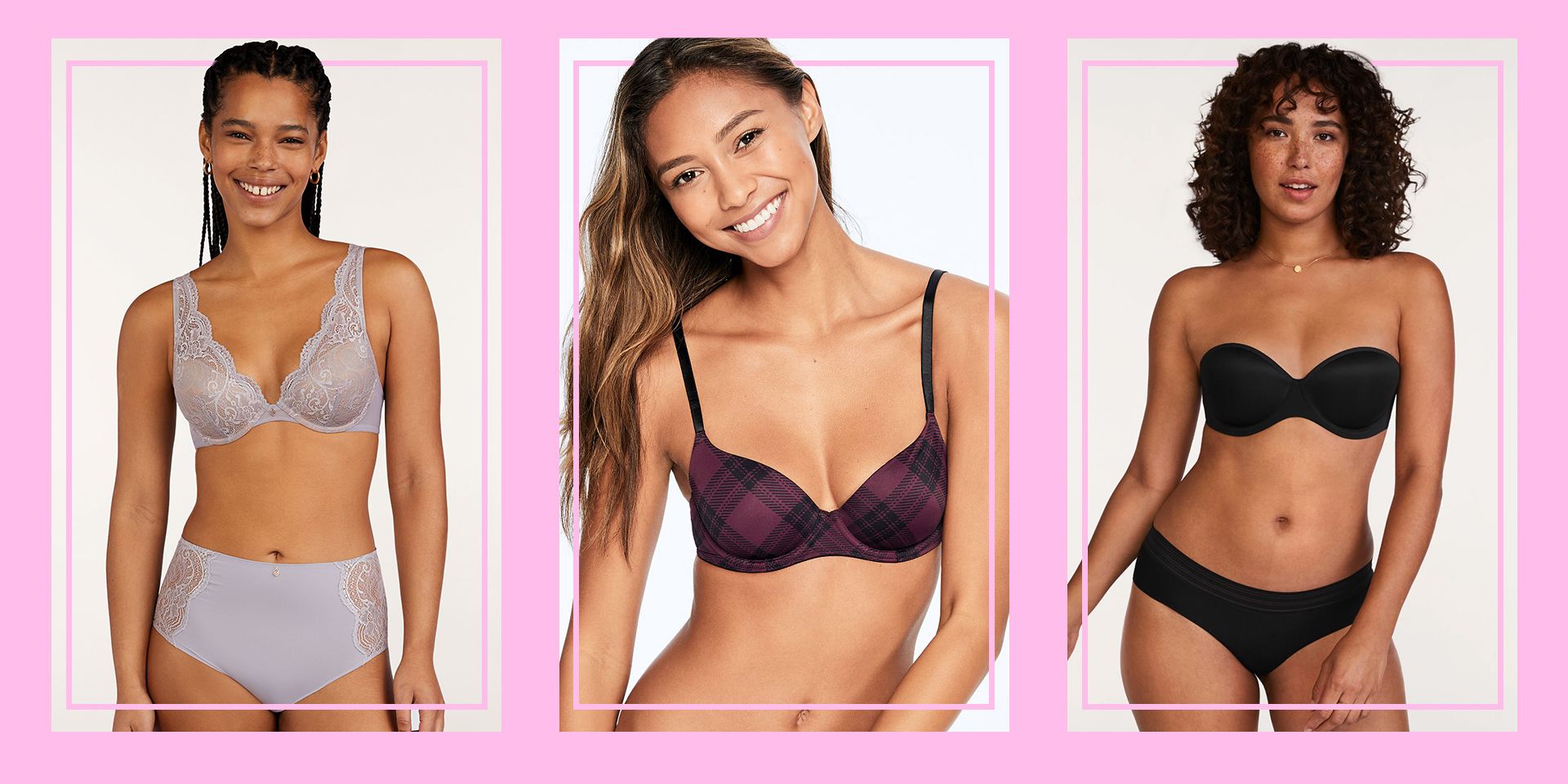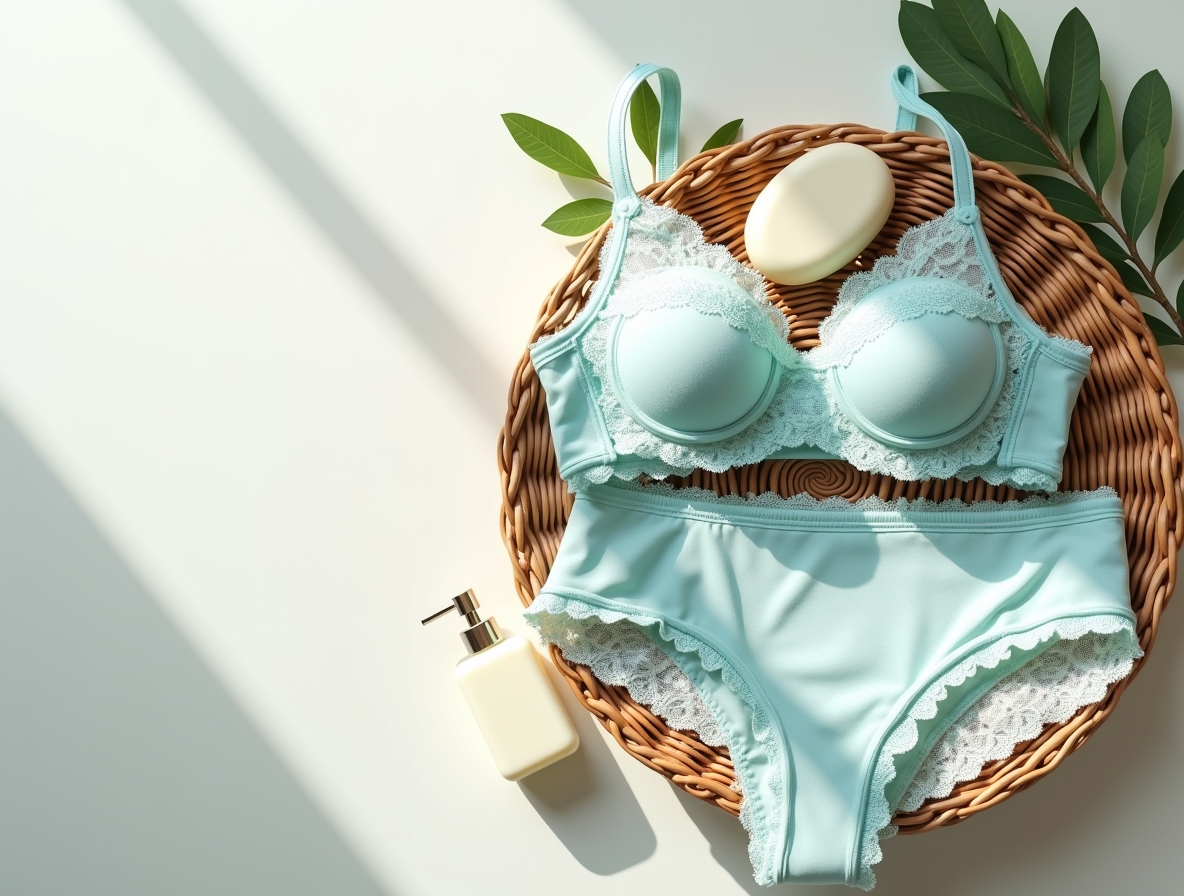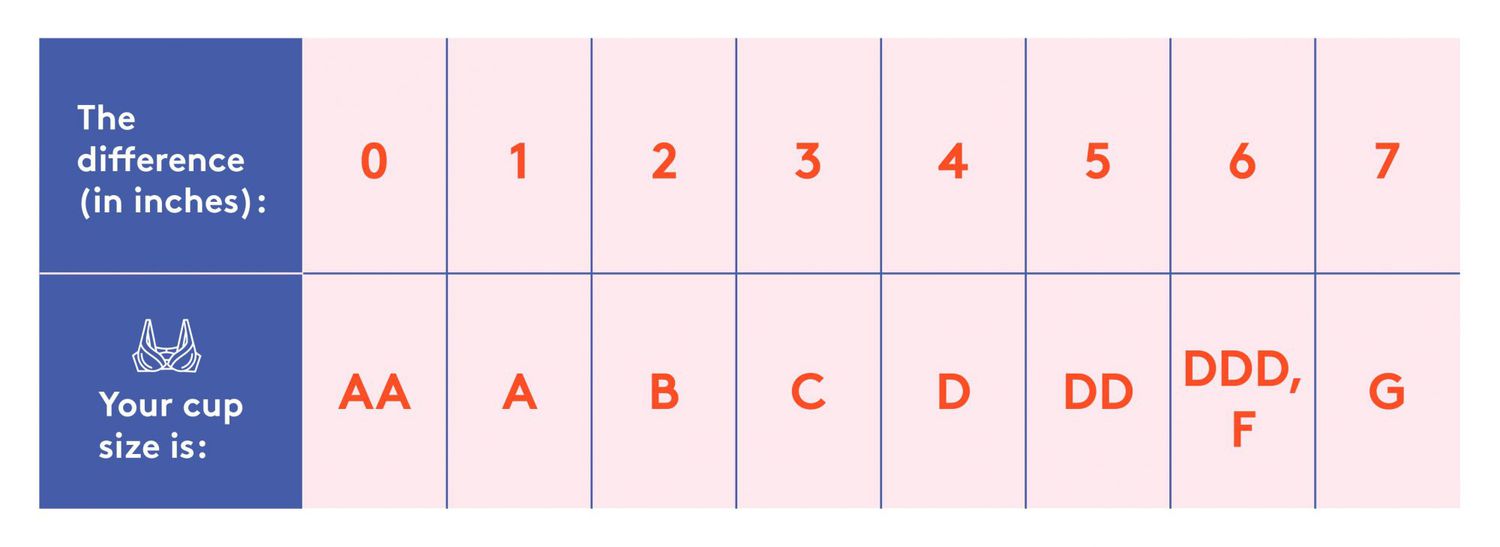Home>Women's Underwear>Bras>What Does The Number And Letter Mean In Bra Sizes
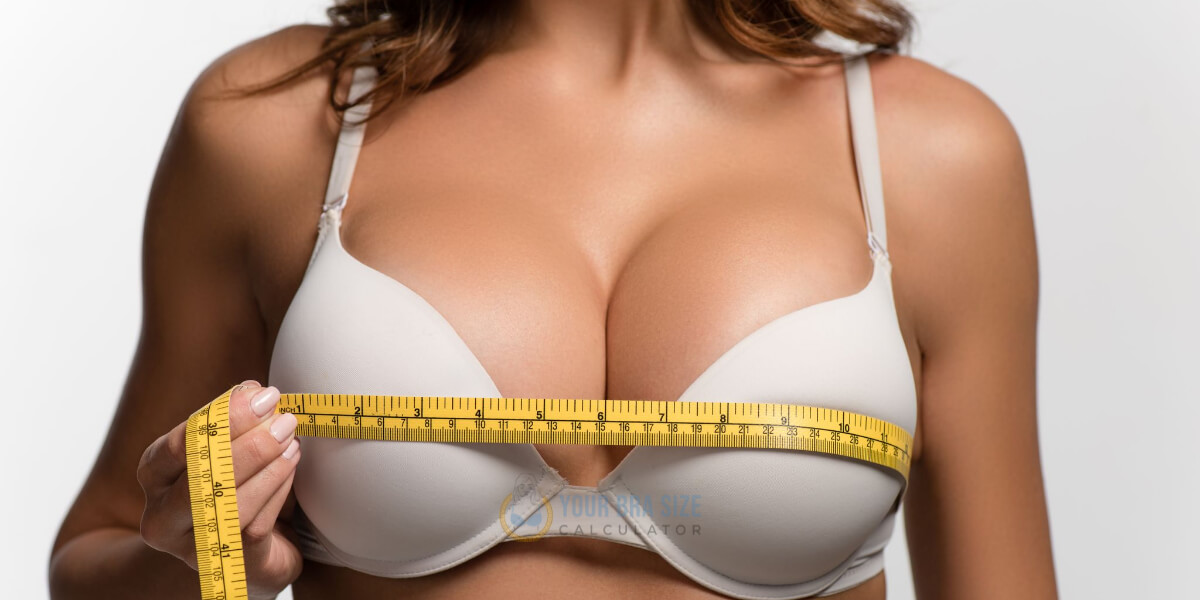

Bras
What Does The Number And Letter Mean In Bra Sizes
Published: July 31, 2023
Learn what the number and letter in bra sizes mean and how they affect your fit and comfort. Find your perfect fit with our guide to bras.
(Many of the links in this article redirect to a specific reviewed product. Your purchase of these products through affiliate links helps to generate commission for Under-tec.com, at no extra cost. Learn more)
Table of Contents
Introduction
When it comes to buying a bra, finding the perfect fit can be a challenge. With an array of numbers and letters, bra sizes may seem like a complex code that is difficult to decipher. But fear not! In this article, we will unravel the mystery behind bra sizes and help you understand what those numbers and letters actually mean.
Bra sizes are represented by a combination of a number and a letter, such as 34B or 36D. These seemingly random characters actually hold valuable information about the size and shape of the bra. By understanding the meaning behind these numbers and letters, you can ensure a more comfortable and supportive fit.
Decoding bra sizes involves understanding two key components: the number and the letter. The number represents the band size, which corresponds to the measurement around your ribcage just under your breasts. The letter represents the cup size, which reflects the volume of the breasts.
It’s important to note that bra sizing can vary slightly between different manufacturers and countries. However, the fundamental principles remain the same, allowing you to make more informed decisions when shopping for bras.
In the following sections, we will delve deeper into the meanings behind the numbers and letters in bra sizes. We will also explore the factors that can influence your bra size and address some common misconceptions. By the end of this article, you will become an expert in deciphering bra sizes and find the perfect fit for your unique body shape.
Understanding Bra Sizes
Before we dive into decoding the numbers and letters in bra sizes, it’s essential to have a basic understanding of how bra sizing works. A well-fitted bra not only provides comfort but also offers proper support, enhancing your overall silhouette.
The band size, represented by the number in your bra size, determines the circumference of your ribcage just under your breasts. To measure your band size, wrap a measuring tape snugly around your ribcage, ensuring it is parallel to the ground. Make sure the tape is held firmly, but not too tight, as you want a comfortable fit.
The cup size, indicated by the letter in your bra size, refers to the volume of your breasts. It is determined by the difference between your band size measurement and the fullest part of your breasts. To measure your cup size, wrap the tape around the fullest part of your breasts, making sure it is parallel to the ground.
Once you have both measurements, use a bra size chart to find your perfect fit. The chart will help you match your band size with your cup size, giving you a complete bra size. For example, if your band size measures 34 inches and your cup size measures 37 inches, your bra size would be 34C.
It’s important to note that bra sizes are not static. Factors like weight gain or loss, pregnancy, and hormone fluctuations can all influence your bra size. Therefore, it is recommended to get professionally measured or remeasured every six months or whenever you notice any changes in your body.
Understanding how bra sizes are determined will set you on the right path to finding a bra that provides comfort, support, and a flattering fit. In the next sections, we will take a closer look at the details behind the numbers and letters in bra sizes to help you further refine your understanding.
Decoding the Number
The number in your bra size represents the band size, which is the measurement around your ribcage just under your breasts. This measurement is crucial for providing the necessary support and ensuring a comfortable fit.
Band sizes typically range from 28 to 48, with each number corresponding to an inch measurement. However, it’s worth noting that some brands may offer additional sizes beyond this range. It’s essential to find the band size that provides a snug but not too tight fit, as this is the foundation of a well-fitted bra.
When selecting a band size, consider your body shape and the level of support you desire. If you have a smaller frame or prefer a more secure fit, you may opt for a smaller band size. On the other hand, if you have a larger frame or prefer a looser fit, you may choose a larger band size.
It’s important to remember that the band should sit parallel to the ground and remain in place without riding up the back. If the band feels too tight or digs into your skin, it may be an indication that you need to increase your band size. Conversely, if the band feels loose and provides minimal support, you may need to decrease your band size.
It’s common for the band size to differ from the measurement you obtain when you measure under your bust. This is because bra bands have elastic properties, allowing them to stretch and conform to your body. The band should provide a firm but comfortable grip to ensure optimal support.
By understanding the significance of the number in your bra size and how it relates to your body measurements, you can make more informed decisions when selecting a bra. In the next section, we will explore the meaning behind the letter in your bra size and its role in determining the cup size.
Interpreting the Letter
The letter in your bra size represents the cup size, which denotes the volume of your breasts. Cup sizes range from AA to O, with each letter corresponding to a different volume.
Understanding the letter in your bra size is crucial for finding a bra that provides adequate coverage and support for your breasts. Cup sizes are determined by the difference between your band size measurement and the fullest part of your breasts.
Here’s a general guide to interpreting the letters in bra sizes:
- AA: This is the smallest cup size, suitable for those with a very small bust.
- A: This cup size is slightly larger than AA and is typically appropriate for those with a small bust.
- B: This cup size is considered average and fits well for those with a medium-sized bust.
- C: This cup size is slightly larger than B and is suitable for those with a fuller bust.
- D: This cup size is larger than C and is commonly associated with a larger bust.
- DD/E: This cup size is even larger than D and is typically fitting for those with a very full bust.
- DDD/F: This cup size is larger than DD/E and provides ample coverage and support for a larger bust.
- G: This cup size is larger than DDD/F and is suitable for those with a fuller bust.
- H: This cup size is larger than G and provides a significant amount of coverage and support for a larger bust.
- I: This cup size is larger than H and is suitable for those with an even fuller bust.
It’s important to remember that cup sizes are not fixed and can vary based on the band size. For example, a 32C and a 36C will have different cup volumes. As the band size increases, the cup size will also increase to maintain the same proportion.
Understanding the letter in your bra size will help you find a bra that not only provides the right amount of coverage but also enhances your natural shape. In the next section, we will explore the various factors that can affect your bra size.
Factors Affecting Bra Size
While understanding the basic components of bra sizing is important, it’s crucial to recognize that several factors can affect your bra size. Your bra size may change over time due to various reasons, such as weight fluctuations, hormonal changes, pregnancy, or breastfeeding.
Here are some key factors that can affect your bra size:
- Weight changes: Gaining or losing weight can significantly impact the size and shape of your breasts. It’s common for the breasts to become larger with weight gain and smaller with weight loss. Consequently, your bra size may change accordingly.
- Hormonal changes: Hormonal fluctuations during puberty, menstrual cycles, pregnancy, and menopause can influence breast size and shape. During these periods, it’s not uncommon for the breasts to feel fuller or more tender, leading to a change in bra size.
- Pregnancy and breastfeeding: Pregnancy causes significant changes in the breasts as they prepare for lactation. The breasts may increase in size and become more sensitive. After giving birth, breast size may continue to fluctuate as a result of breastfeeding and milk production.
- Age and gravity: As we age, the ligaments and connective tissues that support the breasts may become less firm, causing them to droop or lose volume. Aging can also lead to a decrease in estrogen levels, which can result in changes in breast size.
- Medical conditions and surgeries: Certain medical conditions, such as hormonal imbalances or breast surgeries, can alter the natural size and shape of the breasts. It’s important to consult with a medical professional if you experience any significant changes in your breasts.
Understanding the factors that can affect your bra size is essential in maintaining a comfortable and supportive fit. Regularly reassessing your bra size and making adjustments as needed will ensure that you’re wearing bras that flatter your body shape and provide optimal comfort.
Now that we have explored the various factors that can influence your bra size, let’s address some common misconceptions around bra sizing in the next section.
Common Misconceptions
When it comes to bra sizing, there are several common misconceptions that can lead to confusion and frustration. Let’s debunk some of these myths to help you have a clearer understanding of bra sizes.
Myth 1: The larger the cup size, the bigger the breasts: Cup size is relative to band size, so a 32D will have smaller breasts in volume compared to a 38D. The cup size alone does not determine the actual size of the breasts.
Myth 2: There is a standard bra size: In reality, bra sizes can vary slightly between different brands and manufacturers. It’s important to try on various styles and brands to find the right fit for your unique shape and preferences.
Myth 3: You only need to get measured once: Your bra size can change over time due to factors such as weight fluctuations and hormonal changes. It’s recommended to get measured or reassess your bra size every six months or whenever you notice changes in your body.
Myth 4: The band should feel tight: While it’s important for the band to provide support, it should not feel excessively tight or cause discomfort. A properly fitted band should be snug but comfortable, allowing you to breathe and move freely.
Myth 5: The most common bra size is 34B: This is a common misconception perpetuated by the media. In reality, the most common bra size varies depending on different factors, including body shape, genetics, and demographics.
By busting these misconceptions, you can approach bra sizing with a more accurate and informed perspective. Remember that finding the right bra size is a personal journey, and it’s essential to prioritize comfort and fit above everything else.
Now that we have addressed some common misconceptions, let’s explore how you can find the perfect bra fit for your unique body shape in the next section.
Finding the Perfect Fit
Finding the perfect fit is the key to feeling comfortable and confident in your bra. Here are some tips to help you find the ideal bra size and style for your unique body shape:
1. Get professionally measured: While you can measure your own bra size, it’s always a good idea to get professionally measured to ensure accuracy. Many lingerie stores offer free fitting services, and the experts can help you find the right size and style for your body.
2. Try different styles: Bras come in various styles, including plunge, balconette, full coverage, and sports bras. Each style offers different levels of support and shaping. Experiment with different styles to see what works best for your breasts and clothing preferences.
3. Pay attention to the band: The band should provide most of the support, so make sure it sits parallel to the ground and fits snugly without digging into your skin. If the band rides up your back, it’s a sign that the band size is too big.
4. Check the underwire: If you prefer underwire bras, ensure that the wire rests comfortably against your ribcage without digging into your breast tissue. The underwire should encapsulate each breast fully for optimal support and shaping.
5. Assess the cup size: The cups should fully encapsulate your breasts without any spillage or gaps. If you notice spillage, try a larger cup size. If you encounter gaps, consider trying a smaller cup size or a different style that suits your breast shape.
6. Consider the fabric and straps: Ensure that the fabric is comfortable against your skin and that the straps are adjustable and provide adequate support without digging into your shoulders. You want a bra that feels secure yet lightweight throughout the day.
7. Trust your instincts: Ultimately, trust your instincts and how you feel in a bra. If it feels uncomfortable or doesn’t give you the desired support, it may not be the right fit for you. Don’t settle for anything less than a bra that makes you feel confident and comfortable.
Remember, finding the perfect fit may require trial and error as every individual is unique. Be patient and open to trying different sizes and styles until you find what works best for you.
Now that you have gained a better understanding of bra sizes, decoding the numbers and letters, and factors that can influence your bra size, you are well-equipped to embark on the journey of finding your perfect fitting bra.
Conclusion
Decoding bra sizes may initially seem like a daunting task, but with the right knowledge and understanding, it becomes much simpler. By unraveling the meaning behind the numbers and letters in bra sizes, you can find a bra that offers the perfect fit, ensuring comfort, support, and confidence.
Remember that bra sizes are not static and can change over time due to factors like weight fluctuations, hormonal changes, and pregnancy. It’s important to regularly reassess your bra size and make adjustments as needed to ensure optimal comfort and support.
When shopping for bras, don’t get caught up in common misconceptions. Understand that cup sizes are relative to band sizes and that there is no one standard bra size that fits all. Focus on finding a bra that fits well, provides adequate coverage, and enhances your natural shape.
Experiment with different styles, fabrics, and strap options to find what works best for your body shape and personal preferences. Trust your instincts and prioritize comfort, as a bra that makes you feel confident and comfortable will have a positive impact on your overall well-being.
By following these guidelines and taking the time to understand your unique bra size, you can navigate the world of bras with confidence. Embrace the journey of finding the perfect fit, and enjoy the comfort and support that comes with a well-fitted bra.

